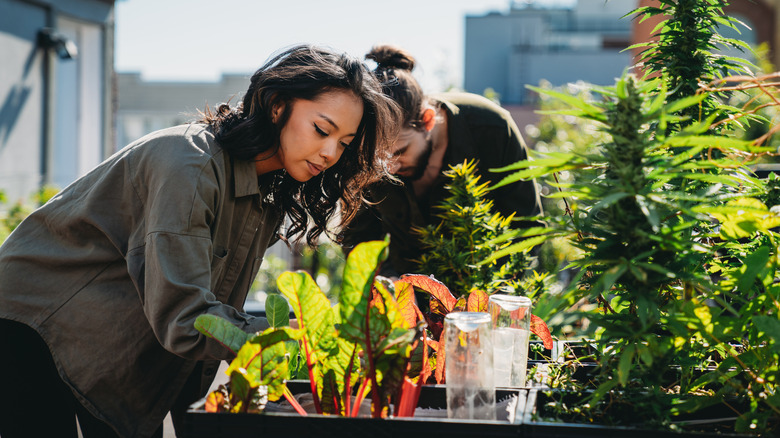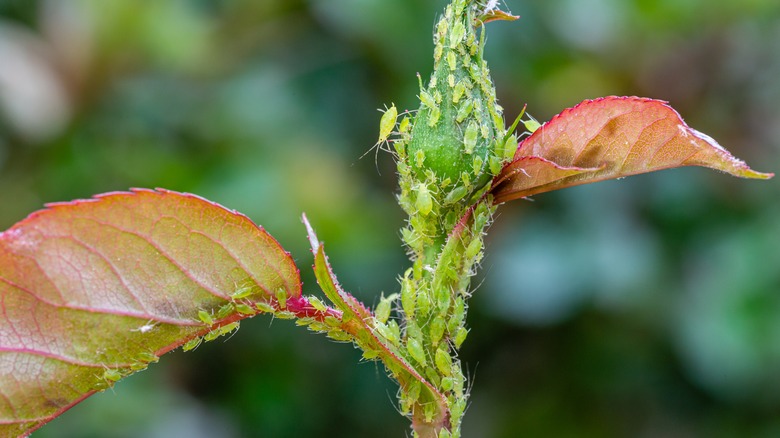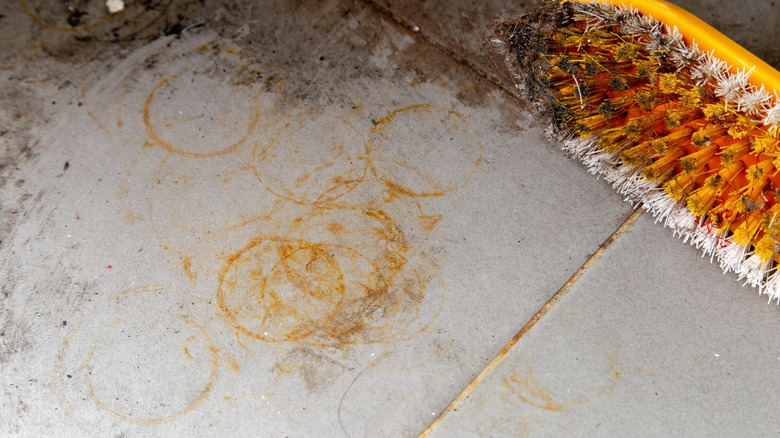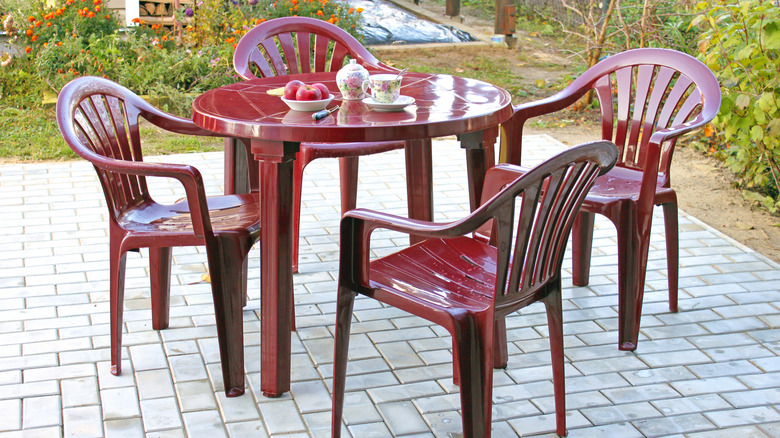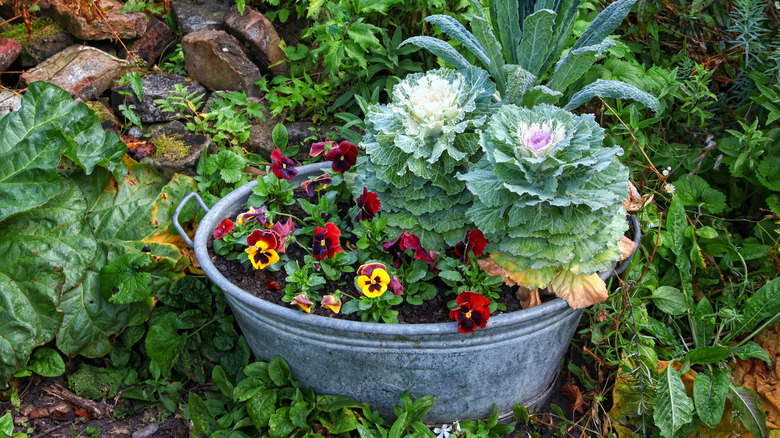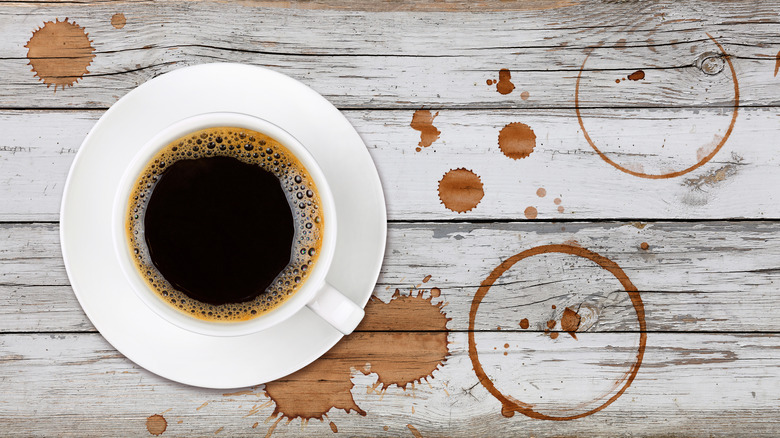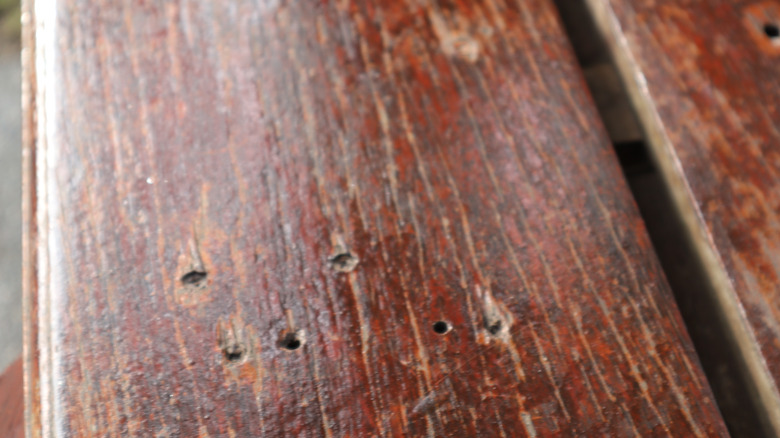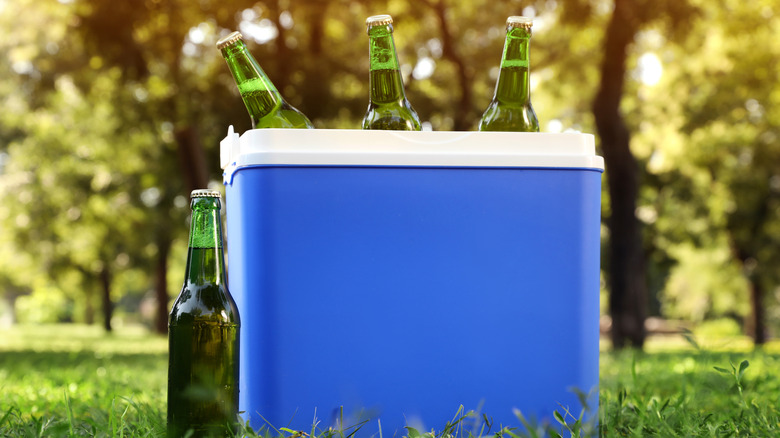Unexpected Ways You Could Be Using Toothpaste Around Your Backyard & Garden
Toothpaste is an unexpectedly versatile ingredient that comes in handy on your patio in numerous ways. The same ingredients that let toothpaste polish, whiten, and freshen up your teeth enable it to handle nuisances and imperfections in your outdoor space. For example, its abrasive properties remove various stains and tarnish as effectively as they eliminate dental plaque. Meanwhile, the antimicrobial compounds present in toothpaste fight bacteria to deodorize your cooler boxes and patio dinnerware. The best part? Toothpaste is a less harmful alternative to the toxic, chemical-laden compounds you'd normally use for outdoor cleaning. And since most homes have lots of toothpaste handy, it makes small touch-up jobs in your garden hassle-free.
Below, we've listed toothpaste's most intriguing and effective uses around the garden and patio. Each of these toothpaste uses has scientific backing, so you don't need to worry about any unforeseen drawbacks. Moreover, these methods are straightforward, and most require little more than some toothpaste and a cleaning tool, like a brush or cloth.
Use toothpaste to protect your plants and patio from insects
Peppermint and spearmint-flavored toothpaste can be used to repel certain insects from your garden plants. Toothpaste with these flavors usually contains menthol and mint essential oils — compounds that have a proven capacity to ward off insects. A study appearing in the Industrial Crops and Products Magazine (via ScienceDirect) found that peppermint essential oil with a high concentration of menthol is one of the most effective repelling agents against aphids. This finding confirms that toothpaste can be your non-toxic alternative for keeping aphids out of the garden.
To use toothpaste as an insecticide, simply smear a small quantity of it on the plant's stem, leaves, and any areas where insects are present. If you have potted plants, you can apply toothpaste along the rim of the pot to prevent bugs from crawling in. Since toothpaste washes off easily with rain and when you mist or water the plants, be sure to reapply it regularly if the insect problem persists.
A word of caution — it's best to use fluoride-free toothpaste as an insecticide or repellent agent. That's because fluoride is highly toxic to most plants. A study by the Plant Physiology magazine (via the National Library of Medicine) revealed that plant exposure to fluoride led to chlorosis — a condition that inhibits chlorophyll production and reduces the plant's life expectancy. Additionally, the same study noted that fluoride caused tip burn in plants and stunted their growth. To avoid harming your plants, opt for natural, peppermint toothpaste with zero fluoride content.
Eliminate rust stains from your patio and garden
You can use toothpaste to remove rust stains from any outdoor fixtures that come in contact with corroded metal. Patio tiles, outdoor sinks, grill covers, or plastic chair seats that get stained by the adjacent metal components are prime candidates for such a cleanup. Toothpaste is effective at removing rust stains from these surfaces thanks to two of its vital components: sodium bicarbonate (commonly known as "baking soda") and calcium carbonate. Sodium bicarbonate is abrasive, and this quality allows it to clear rust particles out of the surface. Its inherent alkalinity also helps break up the rust. Calcium carbonate is another mild abrasive present in toothpaste, and it, too, helps dislodge iron oxide particles from the stained material. That said, note that toothpaste can only remove stains caused by rust — it will not help you scrub rust off the corroded metal.
Cleaning rust stains with toothpaste is easy, but requires some patience. Start by squeezing some toothpaste onto a brush with soft bristles (like a toothbrush you no longer use!) Then, rub away at the stain until you see the lather turning reddish-brown — this means the iron oxide particles are oozing out of the surface. Rinse the area with water, and repeat until the stain is gone. For best results, you can increase the paste's sodium bicarbonate content by adding some baking soda to it and making the mixture more abrasive.
Toothpaste can smooth out scratches from outdoor furniture
Toothpaste offers an unexpectedly simple way of removing minor scratches from your patio furniture. Scratches are basically disturbances, or protrusions, on an otherwise smooth surface. Toothpaste's sodium bicarbonate and calcium carbonate components are abrasives that can file down these rough protrusions until they're flush with the surrounding surface. To the naked eye, the treated area will no longer appear scratched because the surface of the material becomes smooth once again. Toothpaste can work on a number of materials this way, including plastics and glass, which are commonly used in patio tables and chairs. You can even try it on unhardened metals, as these have a lower hardness than glass and are thus easier to both scratch and polish. The side benefit of using toothpaste to touch up your outdoor items is that its sodium lauryl sulfate content also cleans various residues off their surface — much like it does with your teeth!
Polishing scratches with toothpaste doesn't require much effort. You can use a cloth, brush, or sponge to rub the paste into the affected area. Continue polishing like you would with a piece of sandpaper until you see the scratches disappearing. Then, rinse the spot with water and see whether any stubborn marks are left. If some scratches are still visible, squeeze out some more toothpaste and give the process another go.
Remove tarnish from your metal garden pots
Toothpaste is a dependable friend in your fight against tarnish on metal garden pots and decorations. Tarnish is a type of corrosion caused by a chemical reaction in certain metals, such as silver, aluminum, copper, and brass. Unlike rust, tarnish does not eat away at the metal it affects; it just stains it. Toothpaste's abrasive properties — notably its sodium bicarbonate content — help to dislodge the tarnish stains from the affected areas. If there's any dirt on the surface, toothpaste will remove it, too.
Here's how you can remove tarnish from your beloved metal planters. Start by wiping and rinsing off any loose dirt from the item you want to clean. Next, apply the toothpaste to the tarnished spots, and scrub at the area with a brush with gentle bristles. You'll need to be patient, since tarnish takes a while to come off. Once the tarnish is gone, rinse the item with water one more time.
Get rid of any crayon marks your kids leave on the patio
Toothpaste is a common household item you can use to keep outdoor surfaces free of crayon marks. If you let your kids out on the patio, you've likely had "art" appearing on the furniture, raining, fence, and decking. As long as your little ones are using crayons to draw, you're in luck — all you need is a bit of toothpaste to get your patio looking squeaky-clean again. Toothpaste's little-known ability to clean off crayon marks stems from its abrasive and whitening ingredients. Calcium carbonate and sodium bicarbonate are the common abrasive agents in toothpaste, and they break down the crayon wax. Meanwhile, the toothpaste's hydrogen peroxide content helps bleach the color in crayon marks.
To eliminate crayon markings using toothpaste, you'll need a brush and, of course, some toothpaste. The non-gel toothpaste works best because it has all the ingredients necessary for breaking down the wax and removing the color. To start, cover the crayon marks with a layer of toothpaste. Then, scrub it with the brush, adding more toothpaste as needed. Spray some water on the surface when you notice the crayon marks breaking up and wipe the residue before reapplying toothpaste and scrubbing some more. Crayon marks can be stubborn, so expect this process to take some time and effort.
Clean coffee marks and heat stains from your patio table
Toothpaste is an effective remover of treacherous, stubborn stains like those caused by coffee and heat. Toothpaste does wonders on these stains because of its alkaline nature and abrasive properties. In the case of heat stains, toothpaste's sodium bicarbonate produces a neutralizing reaction. The alkaline compound reacts with the acidic wood surface and breaks down its molecules — including the stained ones. Its abrasive properties speed the process of removing the stained particles from the wood surface. Toothpaste's abrasive agents also scrub the deep-seated coffee stains out of wood fibers, while the alkalinity reacts with coffee's innate acidity.
If you're putting up with such stains on your patio furniture, worry not. All you need is some toothpaste and a few other household items to return these surfaces to their former glory. Before squeezing out any toothpaste onto the stained wood, wipe the surface clean of any loose dirt. Then, apply the paste and add some baking soda to boost its abrasive prowess. Next, rub the area with a sponge or cloth in a circular manner and wipe off the residue with a moist cloth. Don't use brushes, since their bristles may damage the wood surface.
Use toothpaste to fill in small nail holes and dents in wooden surfaces outdoors
No putty? No problem! As long as the holes you need fill aren't too large, toothpaste will serve as an apt substitute. You can use this ubiquitous bathroom item to mask small dents, incisions, and nail holes in your gazebo, fence, or wooden patio furniture and save yourself a trip to the hardware store. Toothpaste can act as an effective gap filler because of the thickening and binding agents in its composition. Some toothpastes use gluten as a thickener, while others rely on xanthan gum instead. Either of these substances gives toothpaste its viscosity when liquid, and keeps it together when it dries.
Before you start, note that toothpaste works best for small holes, and you should use putty for any large imperfections. To get the smaller flaws filled, simply squeeze out a bit of toothpaste, then trowel it over the hole with the blade of a knife. Let your makeshift filler dry before finally painting over it.
Toothpaste will banish unwanted smells from your plastic cooler
Toothpaste helps eliminate odors from various surfaces — including coolers or tupperware you may use for outdoor dining. Toothpaste removes odors using three distinct mechanisms. First, its abrasive compounds remove odor-causing residue and bacteria from the surface. Secondly, the antimicrobial or antibacterial agents, such as triclosan or hydrogen peroxide, kill the bacteria. This second step neutralizes the organisms that contribute to odors even if you can't wipe them all out of the container. Finally, the toothpaste's menthol, along with peppermint or spearmint essential oils give the treated surface a fresh new scent.
To deodorize your outdoor containers with toothpaste, start by squeezing some of the paste onto their inner walls. Next, rub the toothpaste all over the container's interior and make sure no spots are left untreated. Finally, rinse the toothpaste out using a solution of water and dish soap and let the container dry.
